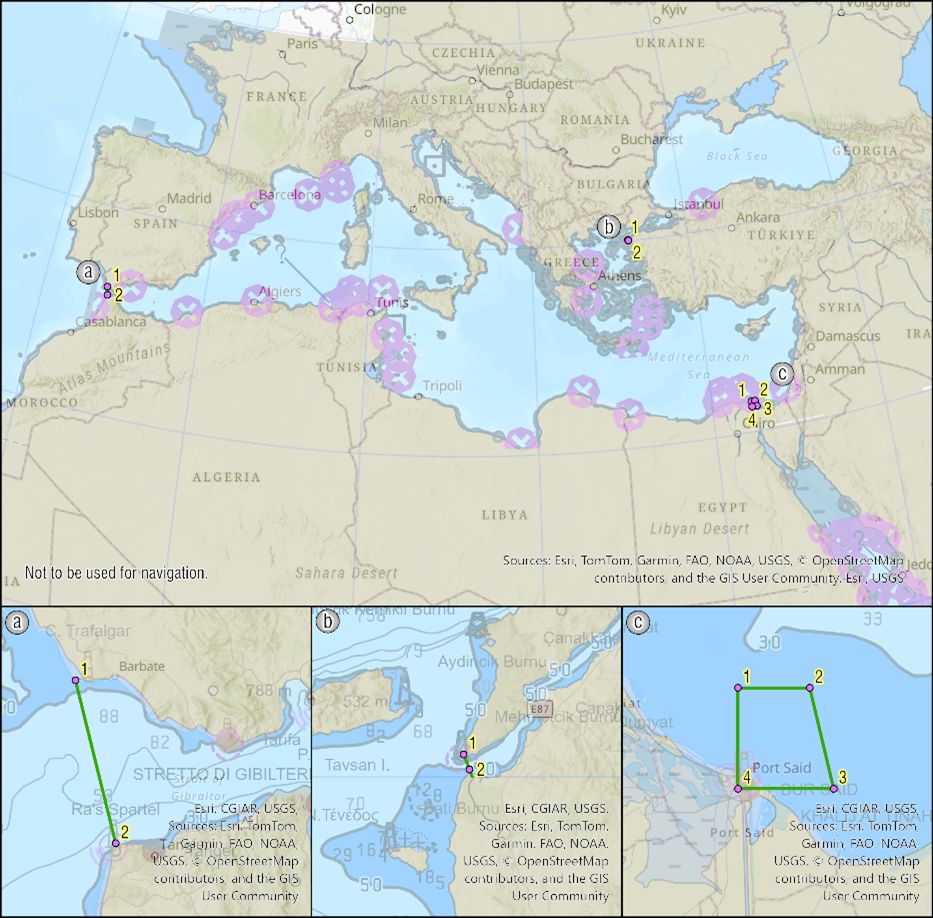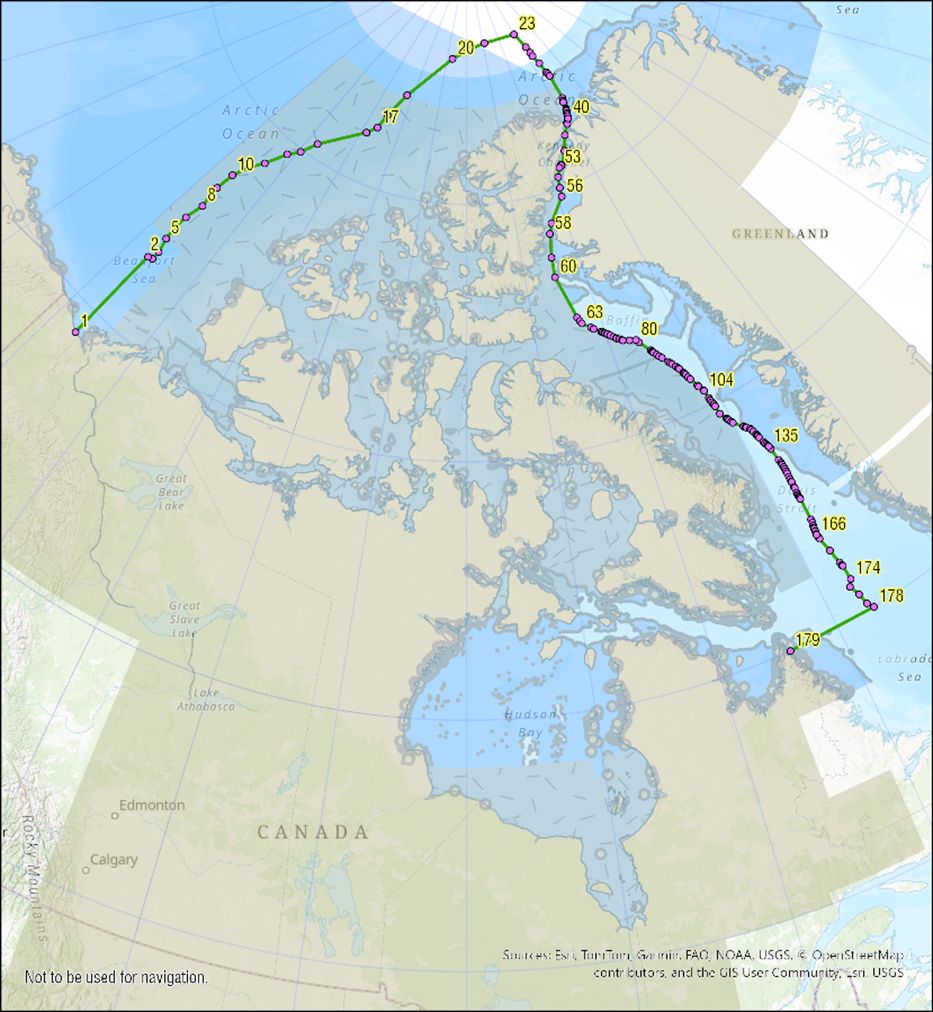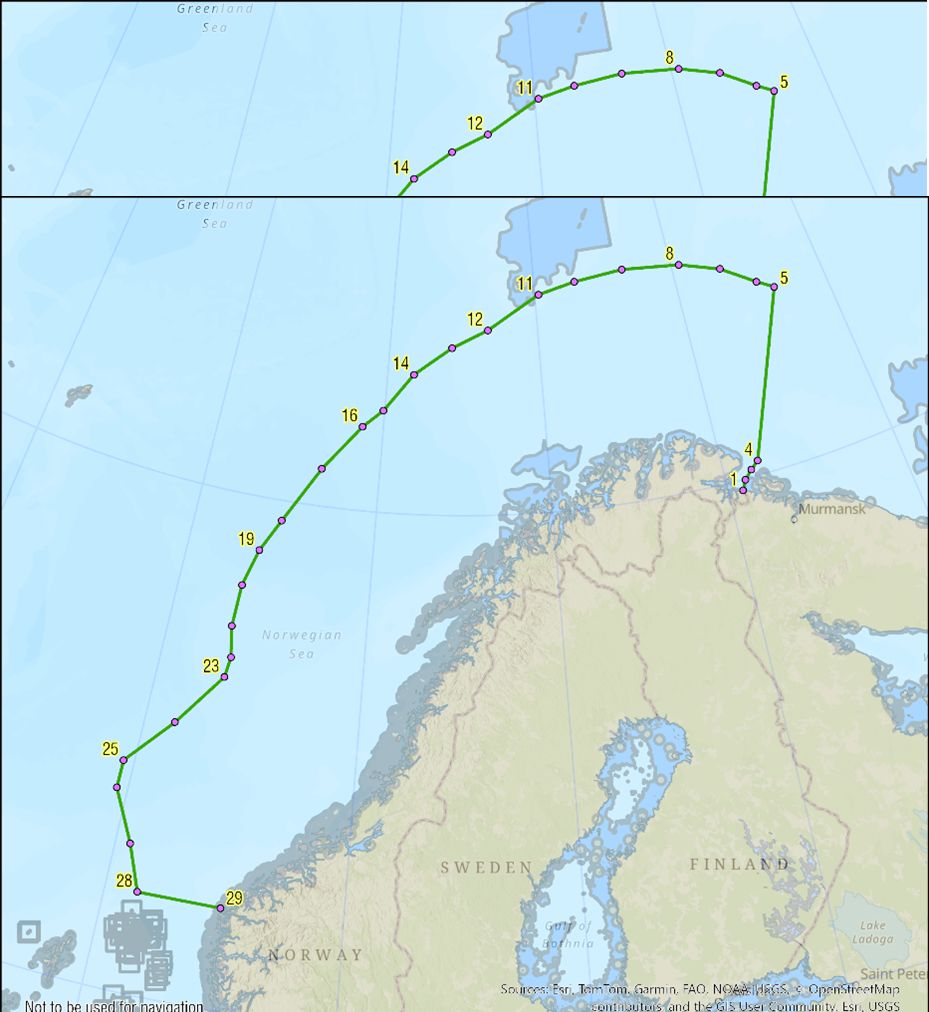As global efforts to reduce air pollution and combat climate change intensify, new maritime regulations are shaping the environmental responsibilities of the shipping industry. The International Maritime Organization (IMO) has announced amendments to Annex VI of MARPOL, introducing three new Emission Control Areas (ECAs) in the Mediterranean Sea, Canadian Arctic waters, and the Norwegian Sea. These measures aim to limit nitrogen oxides (NOx) and sulfur oxides (SOx) emissions, ensuring cleaner air and healthier marine ecosystems. This update outlines the new regulatory requirements, compliance deadlines, and implications for shipowners, operators, and managers navigating these waters.
The following new areas will require ships to comply with emission reduction restrictions:
Mediterranean Sea (SOx restrictions)
Canadian Arctic waters (NOx and SOx restrictions)
Norwegian Sea (NOx and SOx restrictions)
These ECAs are defined in legal documents and illustrated below:

Mediterranean Sea – In the charts above, numbered points correspond to specific coordinates defined in the regulations.

Canadian Arctic waters – In the chart above, numbered points correspond to specific coordinates defined in the regulations.

Norwegian Sea – In the chart above, numbered points correspond to specific coordinates defined in the regulations.
From this date, amendments to Regulation 14.3.5 of MARPOL Annex VI, as amended by IMO Resolution MEPC.361(79), will prohibit ships operating in the Mediterranean Sea ECA from using fuel oil with a sulfur content exceeding 0.10% m/m unless an approved equivalent means, such as an exhaust gas cleaning system, is used.
From this date, under Regulation 13 of MARPOL Annex VI, as amended by IMO Resolution MEPC.392(82), ships operating in the Canadian Arctic or Norwegian Sea ECAs with marine diesel engines over 130kW output must be certified under the 2008 NOx Technical Code to meet the NOx Tier III standard, as follows:
For the Canadian Arctic ECA:
Ships with keels laid or at a similar stage of construction on or after 1 January 2025.
For the Norwegian Sea ECA:
Ships with a building contract placed on or after 1 March 2026.
In the absence of a building contract, ships with keels laid or at a similar stage of construction on or after 1 September 2026; or
Ships delivered on or after 1 March 2030.
From this date, amendments to Regulations 14.3.6 and 14.3.7 of MARPOL Annex VI, as revised by IMO Resolution MEPC.392(82), will prohibit ships operating in the Canadian Arctic or Norwegian Sea ECAs from using fuel oil with a sulfur content exceeding 0.10% m/m unless an approved equivalent means, such as an exhaust gas cleaning system, is used.
Lloyd's Register has advised that shipowners and operators should be aware of the three new Emission Control Areas (ECAs) for nitrogen oxides (NOx) and sulfur oxides (SOx).
Ships operating in or entering the new SOx ECAs on or after their effective dates must carry sufficient compliant fuel oil on board (maximum sulfur content of 0.10% m/m) and use it when required, or have installed and be operating an approved alternative compliance method such as an exhaust gas cleaning system.
Ships entering the new SOx ECAs prior to these dates and intending to remain within them after the ECA enters into force must ensure compliant fuel oil is in use no later than 00:00 hours on the effective date. Lloyd’s Register recommends that this fuel switch is documented in the same manner as when entering an existing ECA.
The currently designated NOx and SOx ECAs are as follows:
North American ECA
United States Caribbean Sea ECA
Baltic Sea ECA
North Sea ECA
With the introduction of these new Emission Control Areas (ECAs), shipowners, operators, and ship managers must take proactive steps to ensure compliance with the revised MARPOL Annex VI regulations. Ships operating in these areas will need to switch to low-sulfur fuel, deploy exhaust gas cleaning systems, or meet stringent NOx Tier III standards depending on their area of operation. Non-compliance may lead to penalties, operational disruption, and environmental liability. As the effective dates approach, early preparation—including fuel transition planning, technical modifications, and regulatory certification—will be critical to maintaining smooth and compliant operations. Shipowners are encouraged to assess their readiness and engage with classification societies and regulatory bodies to ensure a seamless transition to these stricter emission standards.